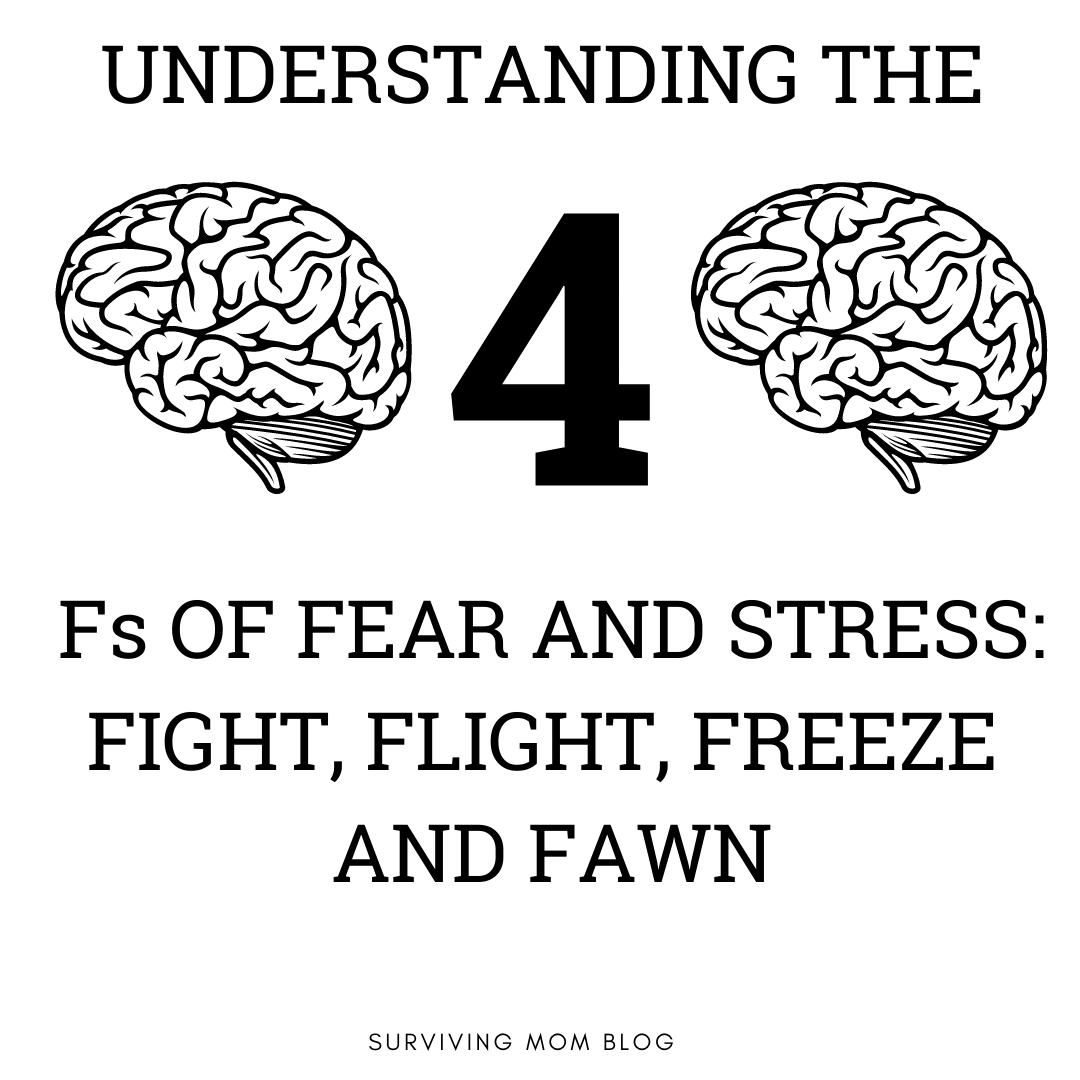
Fear and stress are emotions that shape our perception of the world. Whether we grew up often feeling afraid or felt only the occasional nervousness, we can all vividly recount a time in our childhood where we were truly frightened. Throughout our childhood, the circumstances that caused us to feel fear or stress resulted in responses to that exposure. Even if you didn’t grow up abused, each of us encountered situations that impacted our way of reacting. We learned to protect ourselves through our responses to those traumas (big or small). There are 4 fear and stress-based responses, known as the 4 Fs of Fear and Stress. These responses shape your reactions in adulthood.
What are the 4 Fs of Fear and Stress?
These responses are evolutionary and primitive, allowing both animals and humans to survive danger and keep us safe. Any of the 4 Fs of Fear and Stress can be used depending on the situation/threat. A person may also use more than one in a given situation:
Fight
This type of response can be physical fighting as well as using your voice to protect yourself. Examples include attacking, yelling, or attempting to frighten the source of danger. This response can also be seen when trying to control another person or arguing and/or defending yourself.
Flight
This can mean physically leaving a situation that causes fear, or it can be done by mentally checking out. Tuning out stressful situations, changing the subject, or avoiding things that cause fear or stress are other examples. It may also be shown by not getting emotionally close to others or constantly move from place to place. Any attempt to run away in an attempt to protect oneself is an example of flight. (pete-walker.com, 2018)
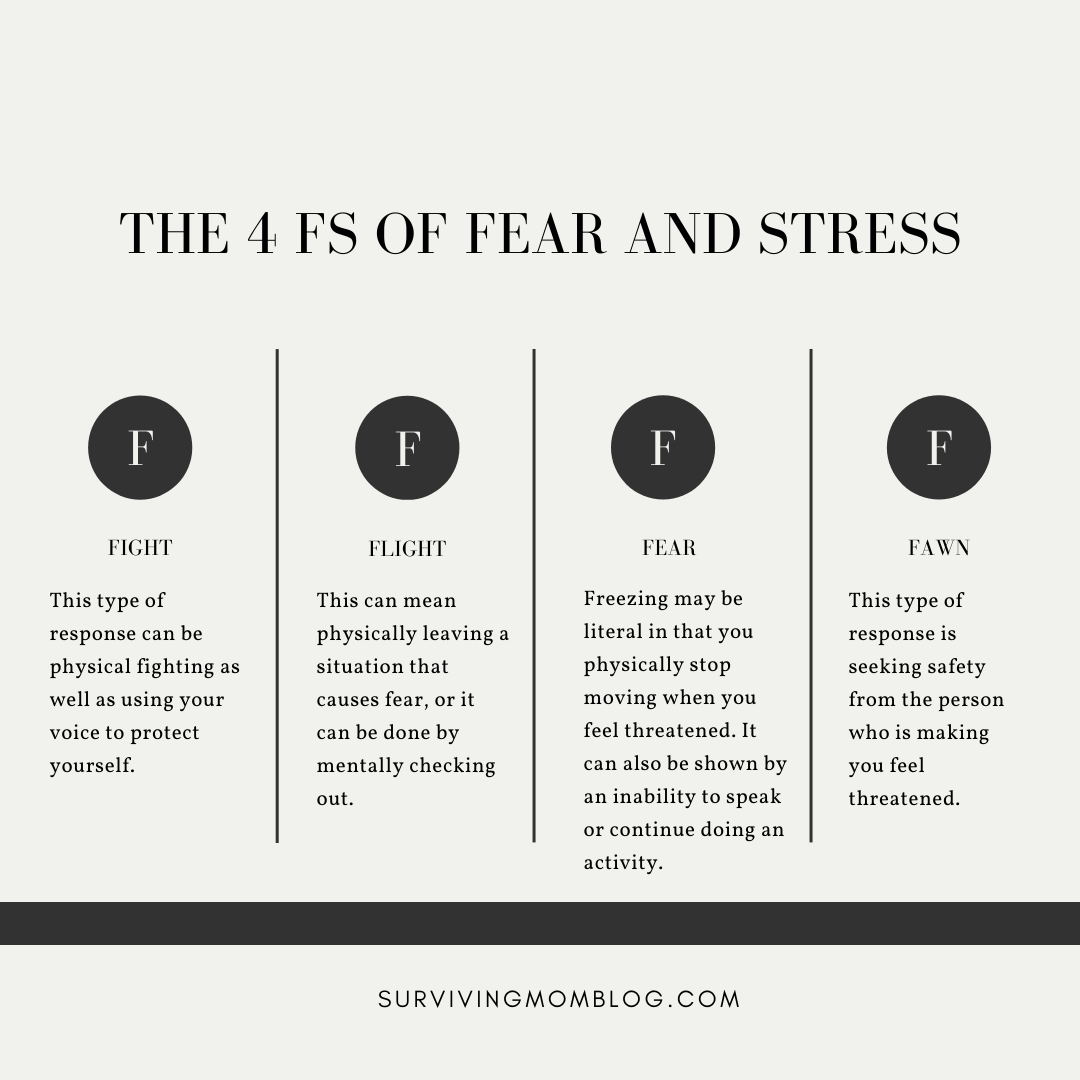
Freeze
Freezing may be literal in that we physically stop moving when we feel threatened. It can also be shown by an inability to speak or continue doing an activity. This can include disconnecting from your pain, prolonged sleep or daydreaming, and/or zoning out in front of the TV. This response can also cause isolation from others.
Fawn
This type of response is seeking safety from the person who is making them feel threatened. This can be seen by someone who has little or no boundaries, goes out of their way to please others, and is overly accommodating. Attempts are made to avoid conflict with the perceived threat. This type of response is often a learned response due to a caregiver who is toxic or abusive. The child learns that some form of safety is achieved by accommodating and pleasing that person (betterhelp.com, 2021).
what happens to your body during an involuntary stress response?
When you perceive a situation as stressful or fearful, the physiological stress response begins in the part of the brain that is responsible for perceiving fear, known as the amygdala. The amygdala interprets images and sounds around you, and when it gets triggered, it sends a signal to the hypothalamus, which then stimulates the autonomic nervous system (ANS).
The ANS is comprised of the sympathetic and parasympathetic nervous system. The sympathetic nervous system controls the fight or flight response, and the parasympathetic nervous system is responsible for the freeze and fawn response. The parasympathetic nervous system also triggers the response that enables your body to go back to its normal state after the danger has passed ( health.harvard.edu, 2019).
When your ANS is stimulated, your adrenal glands release adrenaline and cortisol. These two hormones are immediately released, and they may affect your heart rate, breathing, vision, hearing, blood thickening, skin temperature, and/or lowering your feeling of pain. This is done to protect you from the oncoming threat. The specific physiological reaction depends on how you respond to stress, which varies. It is also possible to shift between F responses during the same situation. These reactions are something that happen instantaneously and often without our awareness.
These physiological reactions are triggered by a psychological fear.
These psychological fears or stresses are conditioned from your childhood, and they were triggered when you were first exposed to something that you perceived as stressful and/or fearful. These triggers will vary from person to person. Your response may be due to a similar situation or something that is associated with a negative experience from your past. When faced with these perceived threats, your brain thinks you are danger (health.harvard.edu, 2019).
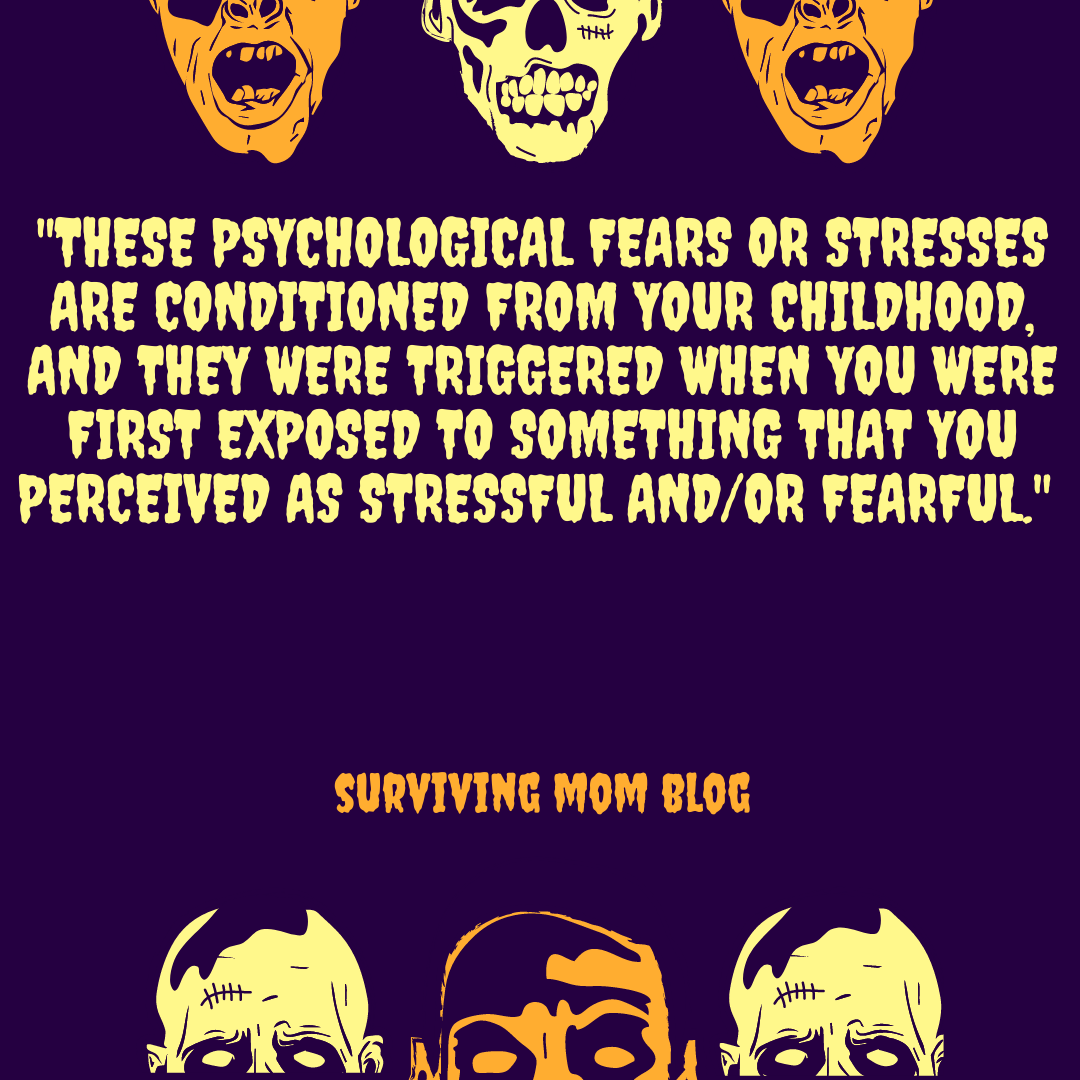
The 4 Fs of Fear and Stress are responses meant to protect you. Many people will use each of them at some point based on which is most appropriate to the situation. However, some depend on only one or two of the 4 Fs of fear due to chronic anxiety and/or repeated trauma (pete-walker.com, 2018). As a result, the autonomic nervous system gets dysregulated. Even when the danger is gone, the person often gets stuck in survival mode and is quick to use their go-to fear and stress response(s). These responses become overused, and the brain gets conditioned to respond to situations that are not threatening.
Are The 4 Fs of Fear and Stress Something We Can Control and Get Rid Of?
The 4 Fs of Fear and Stress happen faster than our conscious thoughts. It is an automatic and physiological reaction. However, it is a learned reaction, meaning that we can gain insight into the types of responses we have, how they affect our body, and whether or not those reactions are truly needed depending on the circumstances.
We can recognize that although these responses helped us in our past, they are not serving us now. We can learn ways to cope with an overactive fear and stress response. As a result, the 4 Fs of Fear and Stress can be used when they are necessary, as opposed to constantly.
How can we overcome the 4 Fs of Fear and Stress Response if it is being overused?
(1) Seek professional help
A mental health professional can help you to deal with your past trauma(s) and anxiety. They can work with you to manage your overuse of the 4 Fs of Fear and Stress.
(2) Breathing exercises
Learning how to regulate your breathing can be helpful because your breathing gets altered when you are experiencing the 4 Fs of Fear and Stress. Some breathing exercises to regulate your breathing are:
- Take a deep breath, hold it for a few seconds, and then exhale slowly.
- Belly breathing- instead of breathing from your chest, let your belly rise when you inhale and lower when you exhale
- progressive relaxation exercises- this is one of my favorites and I’ve discussed it in several of my posts. Working your way from one end of your body to the to the other, inhale while contracting/tensing the body part, hold the contraction and your breath, then exhale and let the body part relax.
(3) Exercise
This is a simple and effective way to calm the nervous system. It lowers the energy created in the body and it is a simple and quick thing to do when your heart rate goes up. Even a few minutes of jumping or running in place will get your heart rate up and help you! It also releases endorphins, which make you feel happier. An added bonus is that incorporating exercise into your routine is good for your physical well-being.
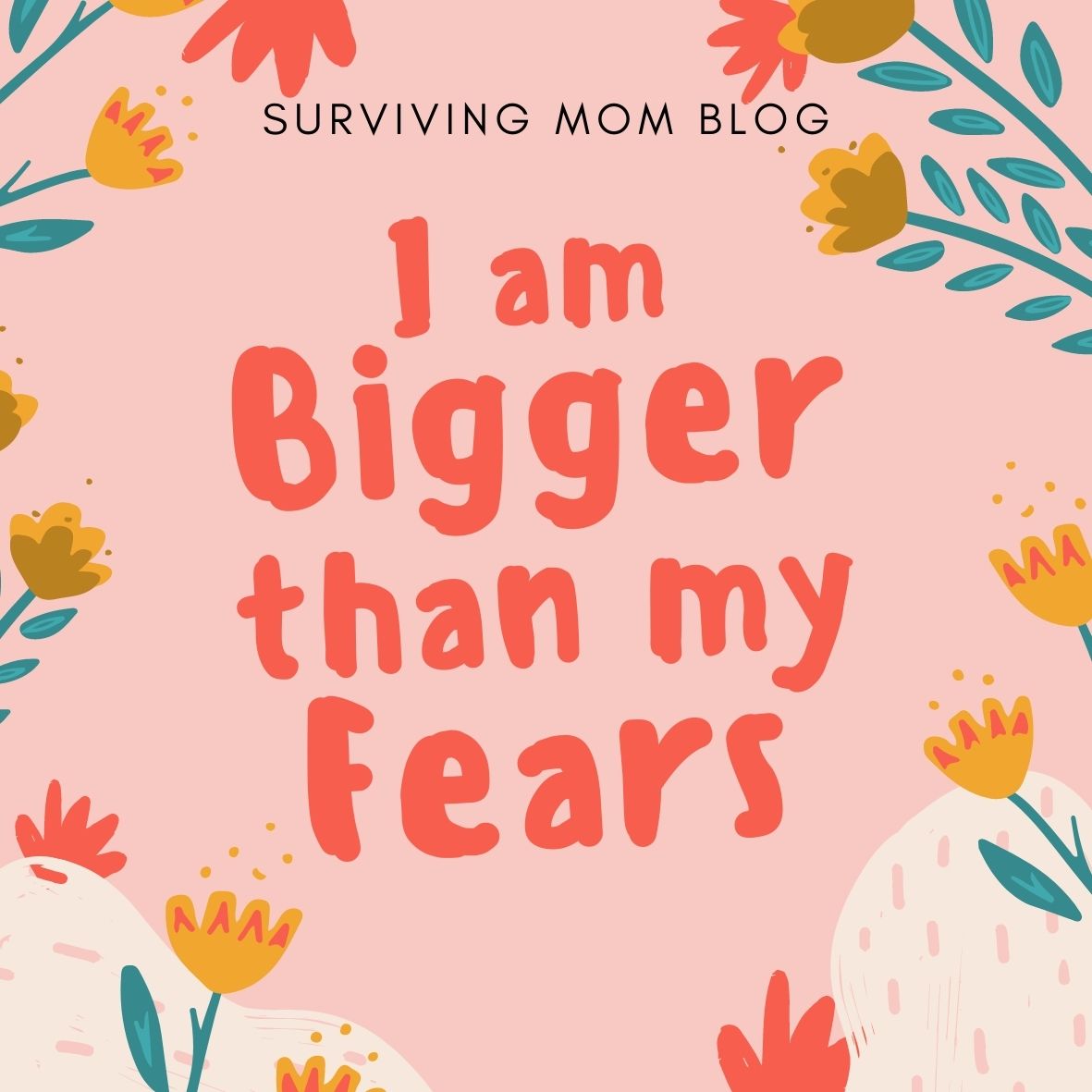
(4) Get curious about what you are experiencing
Once you have learned to calm your body down using the skills above, you can start practicing mindfulness. Mindfulness is a technique where we observe (as opposed to judging) how we feel and where we feel it in our body. It allows us to focus on the present. Mindfulness is helpful because you learn how your body experiences the 4Fs of Fear and Stress, as well as the accompanying emotions and thoughts. Your body automatically reacts, but when you recognize the physiological reactions that take place, it is easier to take a step back. With practice, you can notice the thoughts and emotions that occur with it and decide what to do (such as recognizing how you are feeling, but letting it go), as opposed to acting on auto-pilot.
We do not have to believe and act on every thought we have.
Learning to notice your automatic physiological response and not act on it is not an easy thing to do. It takes a lot of practice as well as understanding that change will not happen overnight (drsoph.com, 2020).
A great mindfulness exercise is known as RAIN. It comes from Judson Brewer, a psychologist who specializes in anxiety (westmichiganwoman.com, 2020):
- Recognize/Relax- recognize what you are experiencing in your body and any thoughts or feelings
- Accept/Allow- Hold space for what you are experiencing instead of running away from it or judging yourself for it
- Investigate: Go deeper and explore those experiences- where am I feeling this in my body, what other thoughts am I having
- Note/Not Attach- Understand that you are having these feelings and experiences, but they do not define you. Thoughts and feelings will come and go.
(5) Remind yourself that you are safe
When you are better equipped at recognizing how your body feels in response to the 4Fs of Fear and Stress, you can remind yourself that even though you don’t feel safe, you actually are not in any real danger.
(6) Practice these techniques when you are not feeling triggered
Incorporate these strategies into your daily routine so that you are comfortable with them. This, in turn, will allow you to better recognize your physiological reactions when you feel triggered.
(7) Grounding techniques
There are many that I discussed here, but a common one is the 5,4,3,2,1, which uses all of your senses to help you focus on the present moment. For example, you can notice 5 things you see, then 4 things you can touch, 3 things you can smell, 2 things you can hear, and 1 thing you can taste. Focus on your surroundings intensely so you can pick up on sensations you may not normally realize.
(8) Social Support
It is important to have healthy social relationships. This will help you to feel more supported and secure, which makes you feel less triggered.
(9) Strategies for the overuse of each specific F of Fear Response (pete-walker.com, 2018)
Note– For any of the F responses, the above strategies, therapy, and a growth mindset are integral in managing their overuse. Below is what you can do additionally based on the overuse of one of the F responses:
Fight– educate yourself on how this type of F response can be harmful rather than helpful (through self-help and/or professional help). If your body is constantly in fight mode, it can result in controlling behavior and frequently being defensive and angry. Try finding a healthier outlet for those tendencies such as supporting causes and defending people who you care about. Pay attention to your physiological responses and start working on taking a break when you feel the fight response.
Flight– if this is your specific F response, you are often a workaholic and/or always on the go. Perfectionism is common, as well as anxiety and over-planning. Meditation is helpful to learn how to stay in the moment. Working on how to gradually shorten the amount of time you flee is also helpful.
Freeze– this is the most difficult F response to treat because this type is typically reluctant to seek professional help. Additionally, they are often in denial about their tendency to disassociate. It may be helpful to use timers and calendars as reminders to get things done (oomm.live, 2019).
Fawn– boundaries are especially helpful for this type of response. It’s also necessary to start recognizing and prioritizing your own emotions and thoughts (mindbodygreen.com, 2020). Therapy is also beneficial in helping such an individual develop a sense of self and practice assertiveness.
Takeaway about the 4 Fs of Fear and Stress
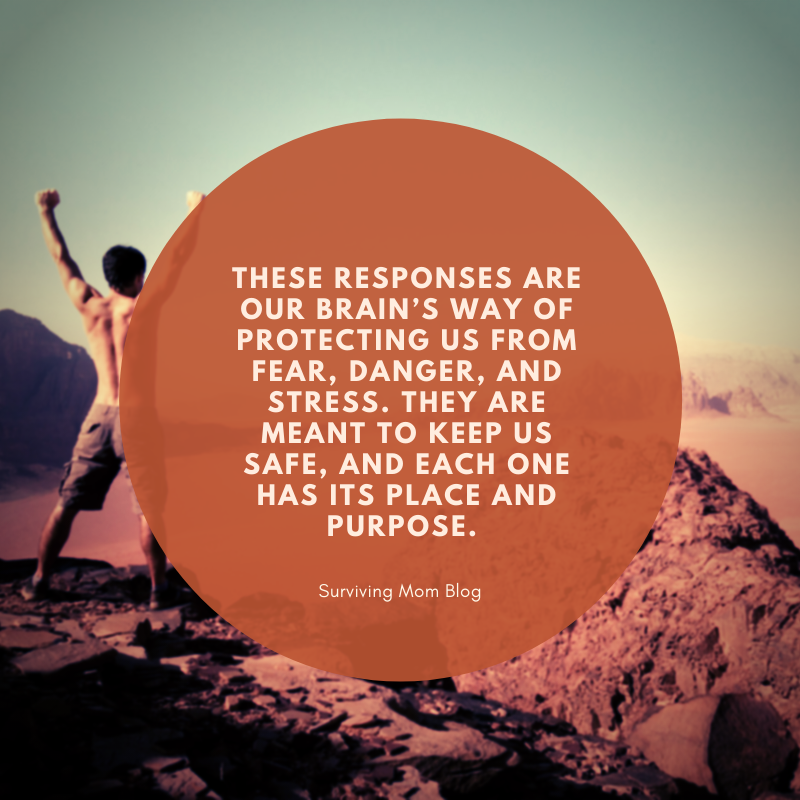
These responses are our brain’s way of protecting us from fear, danger, and stress, which are controlled by our autonomic nervous system. They are automatic, often appearing before any conscious choice becomes involved. They are meant to keep us safe, and each one has its place and purpose. Even if you are stuck in a dominant or hybrid type, the most important thing is to give yourself compassion and love as you gain a deeper awareness of the 4 Fs of Fear and Stress.
Disclaimer
This post may contain affiliate links. If you purchase a product via my link I may receive a small commission at no additional cost to you. Please visit our disclaimers here
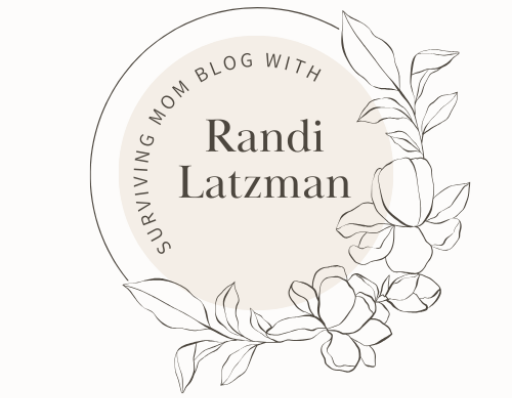
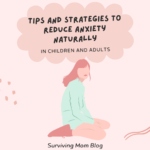
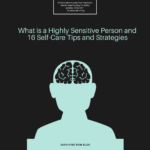


Naomi P Lane says:
Wow I really needed this message today. I am having a freeze and panic response to a huge decision about moving. I disagree with the statement that “freeze” people are less likely to seek help and be pro-active because have always been a help-seeker and open to trying new strategies. Right now as I’m typing this my thoughts are racing, I feel dizzy and light headed and unable to think or make a decision. I am using the techniques of deep breathing, noticing my body symptoms and writing out my questions to make an informed decision.
Randi says:
Hi, Naomi!
So glad this post was helpful! I just wanted to clarify that the statement that Freeze types are less likely to seek help and be proactive pertains to those who ONLY use this F of Fear type. All of the F responses serve a purpose when used accordingly. It is when a type becomes the go-to way of handling stress and fear that it becomes problematic. I’m really glad that you implemented some of the techniques I suggested, and I wish you the best of luck in your decision about moving!
Best,
Randi